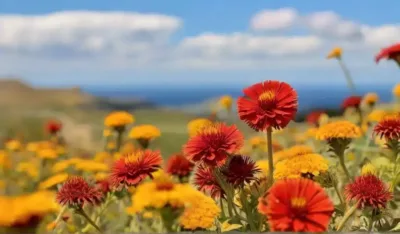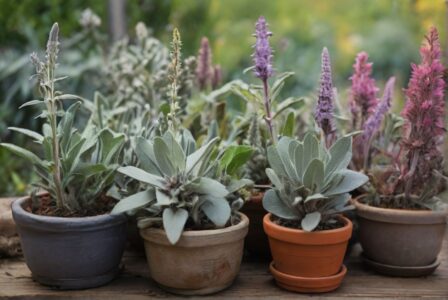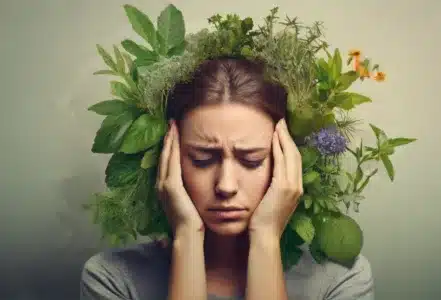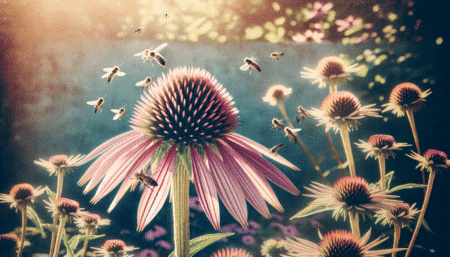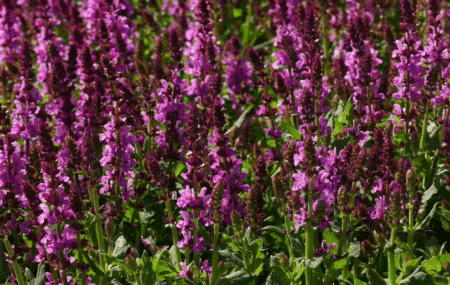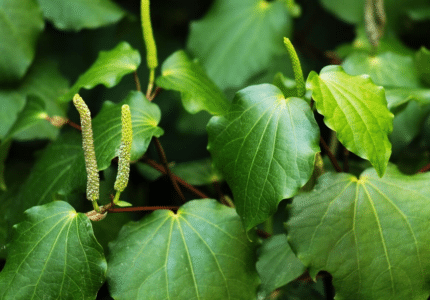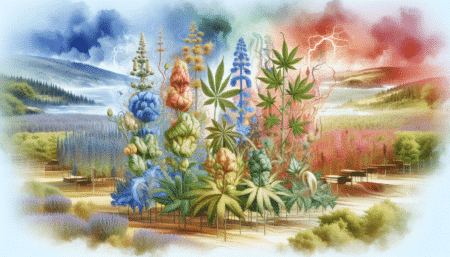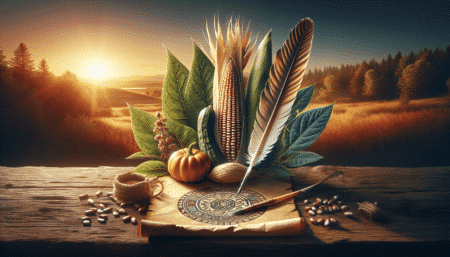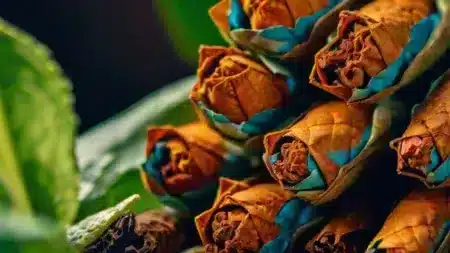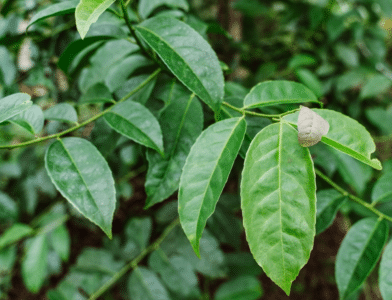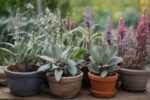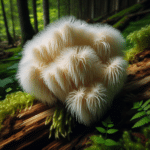- Why Gaillardia is a special flower
- The importance of the coneflower for bees and butterflies
- The appearance of the coneflower
- Site selection and care of Gaillardia in your own garden
- The different types of Gaillardia
- How to create an insect-friendly garden with the help of Gaillardia flowers
- Combination possibilities with other plant species in a near-natural garden
- Conclusion: Get excited about the magic of the coneflower yourself
Here you can find all our Gaillardia seeds or coneflower seeds!
Do you love colorful flowers and want to turn your garden into a true paradise for bees and butterflies? Then Gaillardia is the perfect plant for you! With its large-flowered varieties, such as Gaillardia aristata and Gaillardia grandiflora, it attracts everyone's attention with its bright colors and unique charm. Find out everything you need to know about the location, soil and other information about this fascinating perennial here. Turn your garden into nature's shopping cart!
Gaillardia: the coneflower that magically attracts bees and butterflies
Gaillardia, a fascinating plant with graceful flowers and a special attraction for bees and butterflies. If you want an insect-friendly garden, then you should definitely consider Gaillardia. This perennial belongs to the composite family and is best known for its bright colors and long flowering period. Gaillardia grandiflora, also known as the large-flowered cockade flower, is one of the most popular varieties of this species. It is easy to plant in your own garden and only requires a sunny location and well-drained soil. With its eye-catching flowers, it not only magically attracts bees and butterflies, but also embellishes any garden with its splendor. The Gaillardia coneflower has an impressive range of varieties to offer. From delicate pastel shades to bright, vibrant colors, you will find everything a gardener's heart desires. Whether the large-flowered cockade flower 'Gramm', the aristata variety or other species - each one has its very own charm.
With their long-lasting flowering period, they provide a real play of colors in the garden. But what makes Gaillardia so special for bees and butterflies? The answer lies in their abundance of nectar and the open structures of their flower heads. These make it easy for insects to access the nectar and collect pollen at the same time. Gaillardia is therefore a real food source for our winged friends and contributes significantly to the preservation of biodiversity. To create an insect-friendly garden, you can combine Gaillardia wonderfully with other plant species. For example, a colorful sea of flowers can be created in combination with coneflower, lavender or phlox. These plants also attract bees and butterflies, creating a harmonious ecosystem in your garden. Let your creativity run wild and create your own natural oasis. Bring Gaillardia into your own garden now and let yourself be enchanted by its magical attraction! With its bright colors, long-lasting flowering period and benefits for bees and butterflies, it is the perfect addition for any garden lover. So add it to your shopping cart and enjoy the magic of the coneflower!
1. why Gaillardia is a special flower
Gaillardia is a very special flower that delights many people due to its unique characteristics and impressive appearance. The different varieties of Gaillardia, such as the large-flowered Gaillardia aristata or the Gaillardia grandiflora, are real eye-catchers in any garden. Their brightly colored flowers in a wide variety of shades not only enchant us humans, but also magically attract bees and butterflies. This insect-friendly plant serves as a valuable source of food for the small pollinators and thus actively supports the preservation of biodiversity. Gaillardia is a perennial that is relatively easy to care for and is ideal for sunny locations. The soil should be well-drained to avoid waterlogging. A slightly sandy soil with a pH value between 6 and 7 is ideal for the healthy growth of Gaillardia. When caring for this magnificent plant, care should be taken to water regularly and remove weeds.
A special feature of Gaillardia is its coccoid flower heads, which consist of a large number of small tubular flowers. This flower shape gives the plant its characteristic appearance and makes it a real eye-catcher in the garden. With its vibrant colors such as orange, red or yellow, Gaillardia ensures that the garden shines in full bloom and creates a lively atmosphere. The diversity of Gaillardia varieties allows every gardener to find the right variation for their own garden. Whether you opt for the large-flowered Gaillardia grandiflora or the smaller Gaillardia aristata, both species have their very own charm. With a carefully selected combination of different Gaillardia varieties, you can create an insect-friendly garden and at the same time create a harmonious play of colors. All in all, Gaillardia is a wonderful plant that not only delights with its beauty, but also makes a valuable contribution to protecting bees and butterflies. With the right choice of location and care, every gardener can cultivate these magical cockade flowers in their own garden and thus contribute to the preservation of biodiversity. Let yourself be enchanted by the fascination of the Gaillardia and discover the magical world of this special flower for yourself!
2. the importance of the coneflower for bees and butterflies
Gaillardia, the beautiful cockade flower, is not only a feast for the eyes for us humans, but also of great importance for bees and butterflies. These insects are dependent on pollination and Gaillardia provides them with the perfect nectar and pollen source. The bright flowers attract the busy bees and the delicate butterflies can feast on the abundant supply. The large-flowered Gaillardia (Gaillardia grandiflora) is particularly popular with insects. Its eye-catching inflorescences offer enough space for many buzzing visitors. But other varieties such as Gaillardia aristata also have their very own charm and attract numerous insects. The coneflower has a long flowering period, which makes it an important source of food for bees and butterflies. It blooms from June to September and provides the little helpers with sufficient food over a longer period of time. It is important to choose the ideal location for the plant. Gaillardia prefers sunny spots with well-drained soil. Once planted in the garden, it is a perennial shrub that produces its magnificent flowers every year. If you want to create your own insect-friendly garden, you should definitely consider Gaillardia flowers. Not only are they beautiful to look at, they are also extremely easy to care for.
Once established in the garden, they require little attention and reward the gardener with their colorful blooms. In combination with other plant species in a near-natural garden, this creates a paradise for bees, butterflies and other beneficial insects. Gaillardia is a versatile plant that is available in different varieties. Whether large-flowered or more ornamental, there is a Gaillardia to suit every taste. If you are looking for more information on the individual species and their characteristics, you can find out more online or ask at your local garden center. A quick Google search provides numerous results and allows you to add Gaillardia directly to your shopping cart. The importance of the coneflower for bees and butterflies should not be underestimated. With its magical appeal, it attracts these important pollinators and thus contributes to the preservation of biodiversity. Be inspired by the beauty and benefits of this fascinating flower and create your own insect-friendly garden with the help of Gaillardia flowers!
3. the appearance of the conk flower
If you take a look at the appearance of the cockade flower, you will immediately be enchanted by its beauty and blaze of color. The Gaillardia, also known as the cockade flower, is characterized by its bright flowers, which shine in various shades of yellow, orange and red. Its petals are often bicolored and have a striking pattern reminiscent of small cockades. These unique characteristics make the coneflower a real feast for the eyes in any garden. Gaillardia is a perennial that thrives particularly well in sunny locations. It prefers well-drained soil and requires little care. With its long stems, it reaches a height of up to one meter and forms numerous flower heads. Depending on the variety, there can be both large-flowered Gaillardia and smaller species. So there is a plant to suit every taste.
In addition to its impressive appearance, the Gaillardia has other benefits to offer. It not only attracts bees with its nectar and pollen, but butterflies are also magically drawn to it. This flower therefore makes a valuable contribution to promoting biodiversity in your own garden or on your balcony. To find out more about the diversity of Gaillardia flowers and obtain information about different varieties, it is worth doing some research on the internet. There you will find numerous articles and information that can help you choose the right Gaillardia. You can also search for Gaillardia seeds or plants in online stores such as shopping cart or Google and order them easily. The coneflower is not only an eye-catcher, but also an asset to any garden. With its bright flowers and its attraction to bees and butterflies, it adds a special magic to any green paradise. So don't hesitate any longer and discover the fascinating world of Gaillardia flowers for yourself!
4. site selection and care of Gaillardia in your own garden
If you want to plant Gaillardia in your own garden, it is important to choose the right location and care for the plant accordingly. Gaillardia prefers a sunny location with well-drained soil. Make sure that the soil is not too rich in nutrients, as this can impair the plant's growth. Before planting, you should loosen the soil and remove weeds. Gaillardia is a perennial and can be planted in spring or fall. Dig a hole large enough for the root ball and carefully place the plant in it. Fill the hole with soil and press it down lightly. After planting, you should water the plant thoroughly. Caring for Gaillardia is relatively simple. The plant needs regular watering, especially during dry periods. However, make sure that the soil does not remain permanently moist, as this can lead to root rot. It is also advisable to regularly cut off the wilted flowers (deadheading) to encourage the plant to flower again.
Gaillardia comes in different varieties such as 'grandiflora' or 'aristata'. Each variety has its own special features and color variations. It is best to find out about the different varieties before you buy in order to choose the one that best suits your garden and your preferences. You can create an insect-friendly garden with Gaillardia. The beautiful flowers not only attract bees and butterflies, but also create a colorful atmosphere. Combine Gaillardia with other plant species such as rudbeckia or coneflower to create a natural and diverse environment. Gaillardia is a wonderful plant that not only impresses with its beautiful flowers, but also attracts beneficial insects to your garden. Choose the right location and care for the plant regularly so that it can develop optimally. Let yourself be enchanted by the magic of the cockade flower and create a unique insect-friendly garden.
5. the different species of Gaillardia
The world of Gaillardia is diverse and fascinating. There are various species of this beautiful cockade flower that can enrich the garden with their bright flowers. One of the best-known varieties is Gaillardia aristata, also known as the large-flowered cockade flower. This perennial impresses with its large and eye-catching flowers in bright colors such as yellow, orange and red. The grandiflora Gaillardia, on the other hand, is characterized by its magnificent, multi-coloured flowers, which add a touch of the exotic to any garden. Both species are relatively easy to care for and thrive best in sunny locations with well-drained soil. They require little water and can survive dry periods well. This makes them ideal plants for gardens with a Mediterranean flair or for those looking for a robust perennial.
The various species of Gaillardia offer gardeners a wide range of design options. Whether in mixed borders or as a colorful accent along paths, these plants are guaranteed to attract attention. They also help to promote biodiversity by attracting bees and butterflies. To find out more about the different varieties of Gaillardia, I recommend you do some research on the internet or visit a garden center of your choice. Here you will find detailed information on the individual species and can make the right choice for your garden. Add Gaillardia to your shopping cart and let yourself be enchanted by the magical attraction of this coneflower!
6. how to create an insect-friendly garden with the help of Gaillardia flowers
Want to turn your garden into a paradise for bees and butterflies? Then Gaillardia flowers are the perfect choice! With their bright colors, they magically attract these useful insects. But how do you create an insect-friendly garden with the help of these beautiful plants? First of all, it is important to choose the right location for Gaillardia. These perennials prefer sunny spots with well-drained soil. Make sure that the soil is not too moist, as they do not tolerate waterlogging well. If you are unsure, you can always search the internet for more information or read a gardening article about Gaillardia. Gaillardia flowers come in different varieties, including the large-flowered Gaillardia aristata and the smaller Gaillardia grandiflora.
Both produce an abundance of radiant flowers that will brighten up your garden beds. Choose the one that best suits your personal taste and the design of your garden. To create an insect-friendly garden, you can also combine Gaillardia flowers with other plant species. For example, low-growing perennials such as lavender or sage can be used to provide additional food for bees and butterflies. A colorful variety of flowering plants attracts a greater number of insects and creates a harmonious garden atmosphere. With Gaillardia, you can create your own insect-friendly garden and discover the magic of these beautiful cockade flowers. Experiment with different locations, varieties and combinations of plants to create the perfect look for your garden. You'll be amazed by the variety of bees and butterflies that will visit your Gaillardia flowers. What are you waiting for? Fill your shopping cart with these enchanting flowers and immerse yourself in the fascinating world of Gaillardia!
7. possible combinations with other plant species in a near-natural garden
You've already learned a lot about the fascinating Gaillardia cockade flower. But how can you best combine this beautiful plant in your natural garden? Well, there are many ways to create a harmonious and insect-friendly environment. One popular option is to combine Gaillardia with other perennials and flower species that have similar location and care requirements. For example, you can complement large-flowered varieties of Gaillardia such as "Grandiflora" or "Aristata" with low-growing ground cover plants such as thyme or sedum. This combination not only adds color and variety to your garden, but also provides shelter and food sources for bees and butterflies. Another option is to plant groups of different Gaillardia varieties to create a vibrant splash of color in your garden.
For example, you could choose a mixture of red, yellow and orange cockade flowers and combine them with blue-flowering perennials such as lavender or sage. These contrasts not only attract our eyes, but also have a magical effect on pollinating insects. In addition to the color combinations, you should also make sure that the selected plant species have similar requirements for the location. Pay attention to the sun and partial shade requirements, as well as the soil type and moisture tolerance of the different plants. If you are unsure, you can look for more information online or seek advice at a garden center. So, be creative and experiment with different combinations of Gaillardia and other plant species. Create your own insect-friendly garden that will not only bring you joy, but will also magically attract bees and butterflies. Dare to mix different colors and shapes and create a small natural habitat in your own basket of flowers.
8 Conclusion: Inspire yourself with the magic of the coneflower
The Gaillardia coneflower is a fascinating plant that magically attracts bees and butterflies with its colorful flowers. Its different varieties, such as Gaillardia aristata and Gaillardia grandiflora, offer a variety of colors and shapes that will enrich any garden. The importance of this flower for the insect world should not be underestimated. It provides bees with plenty of nectar and pollen as a food source and serves as a valuable habitat for butterflies. It thus actively supports the preservation of natural pollinator populations. To exploit the full potential of the coneflower, it is important to choose the right location in the garden and provide appropriate care. Gaillardia prefers sunny spots with well-drained soil and requires little water as it is particularly drought-tolerant. With its persistence as a perennial, it can be enjoyed for many years. The large-flowered cockade flowers are not only an eye-catcher in your own garden, but are also very popular with other nature lovers. If you are looking for more information about Gaillardia, you will find numerous articles and plant offers in online stores or nurseries on Google. So add it to your shopping cart - get a piece of magic for your garden with a magnificent Gaillardia!
Further questions and answers about the coneflower
Is Gaillardia hardy?
Yes, Gaillardia is hardy. This plant, also known as cockade flower or Indian blanket, is a perennial that can overwinter well in most climatic zones in Germany. It belongs to the composite family and is originally from North America. Gaillardia is characterized by its bright flowers, which are usually yellow, orange or red in colour. It blooms from June to September and attracts many bees and butterflies with its blaze of color. The plant prefers a sunny location and well-drained soil. In winter, Gaillardia needs a certain amount of protection to prevent frost damage. It is advisable to cut the foliage to about 10 cm above the ground in the fall and cover the root area with a thick layer of mulch or leaves. This will protect the plant from heavy frost. In milder regions of Germany, however, it is also possible for Gaillardia to overwinter without additional protection. This depends on the local weather conditions. In general, Gaillardia is a robust plant that copes well with different weather conditions. With the right care and suitable winter protection, you can enjoy this hardy perennial for a long time.
How do you overwinter the cockade flower?
To overwinter the cockade flower, a few important steps should be followed. First of all, it is important to know that the cockade flower is a frost-sensitive plant and therefore cannot overwinter outdoors. It is best to bring the plant indoors or into a conservatory before the first frost. The cockade flower prefers a cool overwintering temperature of between 5 and 10 degrees Celsius. A bright location without direct sunlight is ideal for overwintering. The plant should be watered regularly so that the root ball does not dry out. The cockade flower does not require any additional fertilization during the winter. It is advisable to remove all dead leaves and flowers regularly to prevent possible pest infestation. In spring, when there is no longer any danger of frost, the cockade flower can be brought outside again. Before planting out, the plant should be slowly acclimatized to the outside temperatures. To do this, place it outside for a few hours a day at first and gradually extend this time. Overall, overwintering the cockade flower requires some attention and care, but with the right measures you can ensure that it will bloom and thrive again next year.
How do you care for a cockade flower?
A cockade flower is a popular ornamental plant that is relatively easy to care for. There are a few important steps to follow to give it the best possible care. 1. location: The cockade flower prefers a sunny location with well-drained soil. It can be grown both in the garden and in a pot on the balcony or patio. 2. watering: The cockade flower needs regular watering, but should not be watered excessively. The soil should be kept slightly moist, but waterlogging should be avoided. 3. fertilization: During the growing season, the cockade flower can be fertilized every two weeks with an organic flower fertilizer. This promotes growth and flower formation. 4. pruning: To maintain a bushy shape and encourage branching, faded flowers can be removed regularly. Pruning can also be carried out in spring to rejuvenate the plant. 5. overwintering: In regions with harsh winters, the cockade flower should be brought into a frost-free room or protected with a layer of mulch. 6 Diseases and pests: The cockade flower is relatively resistant to diseases and pests, but aphids can occasionally occur. These can be controlled with a mild insecticide or removed by spraying with water. By following these care instructions, you can ensure that the cockade flower thrives healthily and beautifully.
How far should the cockade flower be cut back?
The cockade flower should be cut back in spring to promote healthy and bushy growth. It is recommended to cut the plant back to around a third of its current size. This removes old and dead shoots and creates space for new growth. When pruning the cockade flower, make sure that you leave healthy shoots and only cut off the upper parts of the plant. It is best to use sharp secateurs to achieve a clean cut and avoid injuring the plant. It is also important to regularly remove wilted inflorescences to encourage the formation of new flowers. This can be done throughout the growing season. Simply remove the spent flowers by cutting or plucking them off. When the cockade flower has finished flowering in the fall, you can cut it back again. Cut the stems back to ground level to make room for next year and prevent possible diseases. Cutting back the cockade flower contributes to the health and vitality of the plant and promotes abundant flowering throughout the season.
Further links and recommendations
- https://www.mein-schoener-garten.de/pflanzen/kokardenblume/grossblumige-kokardenblume
- https://www.baumschule-horstmann.de/shop/exec/product/697/11256/Grossblumige-Kokardenblume-Kobold.html
- https://www.gaissmayer.de/web/shop/pflanzen-sortiment/stauden/stauden-von-e-bis-o/gaillardia-kokardenblume/417/

